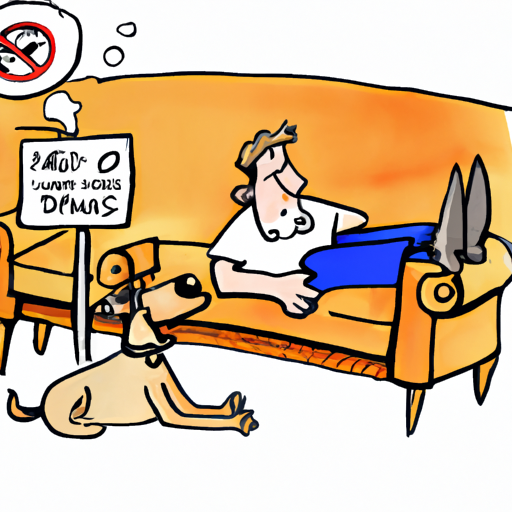If you’re a dog owner, you’ve likely found yourself in this scenario: you leave the room for a moment, and when you return, your furry companion has claimed your spot on the couch. While it’s often endearing, it can also be a source of frustration, particularly when you’re trying to maintain a clean, fur-free living area. This guide will provide you with insights and actionable steps on how to keep dogs off couches.
Table of Contents
- Understanding Why Dogs Love Couches
- Training Tips to Keep Dogs Off the Couch
- Useful Products to Deter Dogs from Couches
- Alternative Comfort Spaces for Dogs
- Frequently Asked Questions
Key takeaways:
- Dogs are drawn to couches for their comfort and to be close to their humans.
- Consistent training and positive reinforcement are crucial to keeping dogs off the couch.
- There are various products available that can assist with this process.
- Offering alternative comfortable spaces for your dog can discourage them from using the couch.
Understanding Why Dogs Love Couches
Understanding why dogs are attracted to couches is the first step in training them to stay off. Dogs, like humans, seek comfort and warmth. The soft cushions of a couch, combined with the familiar scent of their favorite human, make it an irresistible spot. This is especially true for dogs suffering from separation anxiety, as they often gravitate towards items that carry their owner’s scent [^1^].
Additionally, dogs are pack animals, and being on the couch allows them to feel closer to their human pack. This behavior can also be a sign of dominance in some cases, as the “leader” usually occupies the highest position in the pack.
Training Tips to Keep Dogs Off the Couch
The key to keeping your dog off the couch is consistency and positive reinforcement. Here are some strategies:
-
Start early: It’s easier to establish boundaries when your dog is a puppy. However, adult dogs can still learn with patience and consistency.
-
Use Commands: Teach your dog a specific command like “off” or “down”. Make sure to reward them when they follow it.
-
Positive Reinforcement: Reward your dog for sitting or lying in their designated area. This can be in the form of treats, praises, or petting.
-
Limit Access: If your dog jumps on the couch when you’re not home, consider limiting their access to the living room.
-
Consult a Professional: If you’re struggling with training, consider seeking help from a professional dog trainer [^2^].
Useful Products to Deter Dogs from Couches
There are several products in the market designed to help keep dogs off furniture. These include:
-
Couch Covers: Couch covers can protect your furniture and can be easily removed and washed. Some are spiked or textured, deterring dogs from jumping up.
-
Dog Repellent Sprays: These sprays have a scent that dogs find unpleasant, but is usually unnoticeable to humans.
-
Pet Training Mats: These mats give a mild static pulse when your pet steps on it, encouraging them to stay off.
-
Dog Gates: These prevent your dog from accessing the living room when you’re not there to supervise.
Alternative Comfort Spaces for Dogs
Providing an alternative comfortable space for your dog can discourage them from using the couch. This could be a plush dog bed, a pile of blankets, or a heated pet mat for colder seasons. Place this space near the couch, so your dog still feels close to you.
Frequently Asked Questions
Q: Is it bad to let your dog on the couch?
A: It’s not inherently bad, but it can lead to behavioral issues, allergies, or damage to your furniture.
Q: How can I protect my couch from my dog?
A: Apart from training, you can use couch covers, pet repellent sprays, or limit their access to the living room.
Q: What can I put on my couch to keep my dog off?
A: You can use pet training mats, couch covers, or repellent sprays.
Remember, every dog is unique, and what works for one might not work for another. It may require some trial and error to find the most effective method for your furry friend.
[^1^]: Separation Anxiety in Dogs
[^2^]: Professional Dog Training
[^3^]: Creating a Comfortable Space for Your Dog



